2018 County Supervisor District 4 Questionnaire: Omar Passons
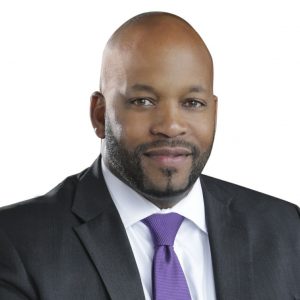 Do you have memorable experiences or memories while riding a bike?
Do you have memorable experiences or memories while riding a bike?
Riding with friends and colleagues in both BikeSD’s Beachside Bike Ride immediately springs to mind! As does the time a group of friends and I rode from North Park down through Golden Hill and over to Liberty Station for Voice of San Diego’s Politifest. The “Politi-ride to Politifest” was a lot of fun. It also revealed that certain parts of our route – often neglected neighborhoods – get far less attention when it comes to traveling surfaces than others. The County has an important role here. Besides joining in specific community-building events, my bicycle is my primary mode of transportation (along with Lyft), so it’s rare that I don’t enjoy even small memorable experiences on a daily basis. It also reminds me of how much work we have left to do to make San Diego a truly world-class bicycling community. Recently I rode to a meeting in Mission Hills from North Park, and between the Georgia Street Bridge mess, as well as the woefully ill- repaired roads - and the cars who have a significant disregard for people not in cars - it was a pretty harrowing ride. On a more positive note, my campaign has made creating and sharing memorable experiences a part of our campaign, having organized bike rides in various communities to showcase our neighborhoods outside of a car. We did one last Saturday through North Park, Normal Heights and South Park, and it was a great way to experience the community.
SANDAG’s failed Measure A and its reform under AB805 have put transportation issues at the forefront of San Diego politics. What is your vision for transportation in San Diego County, and how does active transportation fit into it?
We are all well aware of how active transportation projects in both the City and County of San Diego are delayed time and time again. Even in neighborhoods that enjoy city focus and investment, we see delays. There is a fantastic plan Downtown called the Downtown Mobility Plan. It should be funded immediately. And just as importantly, we have to create plans with similar robustness and enthusiasm for every neighborhood in San Diego.
I opposed Measure A publicly, in part because it failed to sufficiently move forward alternatives to personal car transportation. I supported AB 805 once the four amendments went through and can see a window for much greater transportation justice and increased attention to increasing mode share.
In terms of our vision for transportation in San Diego County, we have several pillars, and are looking forward to releasing our campaign’s policy paper soon, which will lay our focuses out in much greater detail. I can tell you that real, meaningful Bus Rapid Transit will be in our plan – by which I mean not losing the “rapid” part by bending to demands with regard to parking on public streets along the path. We also believe implementing SANDAG’s Early Action Projects are a step in the right direction, though I do not think they go far enough. For example, we are examining ways to get targeted bike infrastructure at the international grade standard of not more than 3% incline so that more people will ride. We are also exploring full electrification of MTS buses. On a simpler note, we want to encourage a monthly version of the CicloSDias event that just closes a major boulevard to cars for one day, similar to communities like Mexico City.
As county supervisor, you may have the opportunity to serve on the boards of MTS or SANDAG. (How) would you advocate for SANDAG’s bicycle early action program, which has experienced significant delays? Would you support MTS ballot measures that include funding for bicycle infrastructure?
Thanks to AB805, the MTS Board has an opportunity seek its own funding sources for transportation infrastructure within its geographical purview. This is potentially a huge boost to both transit and active transportation options in San Diego, because the opportunity to recreate our thoroughfares for transit means we’ll have the opportunity to transform them into Complete Streets with the addition of active transportation infrastructure. I would support an MTS ballot measure that included funding for bicycle infrastructure, and would prefer it be bundled for other environmental justice initiatives like major electrification upgrades.
Unfortunately, improved safety conditions for bicyclists have been opposed by segments of the community. Politicians often seek a “consensus” solution, but these are not always possible. How would you work with all sides to ensure safety improvements occur?
I have not made any secret on the campaign trail about being a bicycle advocate and I do not plan to start now. I will be up front with people that we have economic, public safety, and environmental imperatives to take serious steps now to improve bicycle infrastructure. Naturally, working with residents and small business owners is ideal and I understand that right now many people still drive their personal vehicles to shop. But the point is to help those segments understand that there are ways to maintain – and even increase – their customer pool and access to their homes even while transforming to a more bicycle and pedestrian friendly community that may have less taxpayer subsidized on street parking.
My view is that we must present credible alternatives that allow for a transition period but ultimately move us towards greater mode share and safer bicycle and pedestrian access. I am not running for office to offer milquetoast half-solutions to these issues. Voting for me means voting for the same values I have had with regard to bicycles since I first moved back to San Diego in 2004, while commuting daily from North Park to Linda Vista.
2018 County Supervisor District 4 Questionnaire: Lori Saldaña
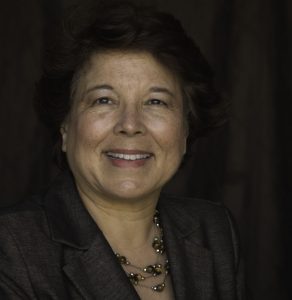 Do you have memorable experiences or memories while riding a bike?
Do you have memorable experiences or memories while riding a bike?
Yes - Bikes have been a part of my life for commuting, exercise, and travel. We had “bike rodeos” in elementary school that taught students safe riding techniques and improved our skills. I have memorable moments that helped me appreciate both the benefits and the risks of bike riding, including:
Multimodal/Commuting: As a student at SDSU, I would carpool to campus, and transport a bike for the return trip. This included riding down Fairmont Avenue into Mission Valley, and catching a bus in Fashion Valley. Traffic was lighter compared then, but it was often hazardous: There were fewer dedicated bike lanes or other separations, which discouraged many other people from biking. I rarely saw other bike riders, and one day, as a school bus drove past, a student threw an object at me and knocked off my sunglasses, bruising my face.
I also commuted from Azalea Park to North Park while working at REI. The store sold many bicycles, and I arranged for educational classes, clinics and hands-on workshops, to encourage safe riding & bike repair. Due to the lack of bicycle lanes, I often encountered heavy traffic and other hazards, and identified safer routes through residential areas. I learned more about the diverse communities and residents of Mid City and City Heights while avoiding congestion and traffic.
On the positive side of these commutes: using a bike was relatively inexpensive. Partnering with carpool and bus connections made it more efficient. As a student and part time employee, I saved money on parking fees, fuel costs, etc. But it also carried physical risks.
Tourism/Travel: Years ago I rode a touring bike with panniers around the Big Island of Hawaii, and camped along the way. While the island traffic was light, the infrastructure was not supportive of cycling: there were narrow or non-existent shoulders, steep drop-offs, and no bike lanes along the one main road around the island.
In contrast, in 2016 I visited Amsterdam, and was impressed with their commitment to bike- only paths and intermodal transit: carrying folding bikes onto trains was a common way for people to commute over long distances. Taxes are very high on cars operated in cities, so people choose transit and bicycles. Ferries and other transit provided space only for bicyclists, separate from motor vehicles, making the cycling experience safe, inexpensive and efficient.
These trips helped me realize attitudes toward bicyclists account for many of the negative interactions and accidents that occur in San Diego, that discourage people from riding bikes for daily commutes. We need to improve attitudes about bicycling, as well as infrastructure.
SANDAG’s failed Measure A and its reform under AB805 have put transportation issues at the forefront of San Diego politics. What is your vision for transportation in San Diego County, and how does active transportation fit into it?
As former Chair of Housing & Community Development, my committee supported legislation that encouraged “transit oriented development,” to get people out of cars and into other transportation choices.
My vision for San Diego includes continuing with this approach to housing developments, supporting public transit and active transportation options, linking the use of bikes with transit, and increasing safety for San Diegans who choose these options over motorized vehicles. Bicycling, walking, transit and even boating as a means to move around the region has significant benefits: it reduces traffic congestion, improves air quality, reduces traffic noise in neighborhoods, and helps meet GHG reduction goals of Climate Action Plans (CAPs) by reducing vehicle miles travelled.
District 4 is in the geographic center of San Diego County, and includes some the region’s most densely built neighborhoods, close to public transit options. It has some of the most “walkable” communities- and also some of the most dangerous intersections for cyclists and pedestrians. Along with encouraging and supporting active transportation options, we need to increase public information and educational efforts, to make non-motorized travel safer for everyone.
Active transportation is good for public health- one of the County’s main responsibilities. It helps people be more active in their daily lives, and can help prevents obesity, heart disease, and other health risks. San Diego commuters are encountering an increasingly grid-locked highway system during peak drive times, adding to stress- a known contributor to hypertension and other illnesses.
The County needs to encourage, and seek state funds, for development of “Safe Pathways to Schools” throughout the region. As a career Community College educator, I will explore ways the County can also partner with regional colleges and universities, to support programs for students and employees who seek alternatives to driving to campus.
We need to encourage employers to have a supportive role. They can provide showers for “active commuters” at the work place, offer storage lockers for bikes, and/or create partnerships with nearby fitness centers who may offer these amenities.
Finally, since San Diego County is still working on a CAP, it would benefit by producing an update of its Bicycle Transportation Plan. Since SANDAG projects a significant funding shortfall, it becomes even more important for the County to step up to provide support for the updates to a regional plan.
There are funds available for this, thanks to the California Transportation Commission, and their support of the state’s Active Transportation Program. As County Supervisor, I will take the following steps to fund the research needed to develop a plan, and have a better understanding of what’s contributing to safety and other issues that discourage more bicycle ridership:
- Reviewtheresultsofapplicationsalreadysubmittedtothestate’sActiveTransportation Program, to engage in ongoing research, and fund activities based on the results.
- Seekadditionalfundsforbikeroutestudies,toexpandtheworkdonebySDSU,to identify where people are currently riding bikes countywide, evaluate how safe those routes are, and determine if they are the most efficient from an infrastructure and multi- modal perspective.
- Evaluate other county programs in California and other states, to learn from models that would be applicable to San Diego.
As county supervisor, you may have the opportunity to serve on the boards of MTS or SANDAG. (How) would you advocate for SANDAG’s bicycle early action program, which has experienced significant delays? Would you support MTS ballot measures that include funding for bicycle infrastructure?
Early action program: Regarding concerns about delays, and the time and costs of conducting pubic reviews and hearings but few infrastructure improvements: Effective planning requires accurate and current information, as well as public input. But since so few miles of bike paths have been created, after the expenditures of $60 million, I would ask for a report and audit of the program to date, to determine why results are so slow to be realized and what needs to change to create firm timelines for projects to be identified and completed. Bike lanes and bike paths are part of this, but we also could benefit from improved lighting, and repairs to streets, bike lanes and paths (see: Rose Canyon bike path improvements).
Ballot measure & Active Transportation fund requests for bicycling: I would support the inclusion of funding bicycle infrastructure in a ballot measure.
Unfortunately, improved safety conditions for bicyclists have been opposed by segments of the community. Politicians often seek a “consensus” solution, but these are not always possible. How would you work with all sides to ensure safety improvements occur?
It may be difficult to reach consensus and advocate for cyclists, partly because only an estimated 6% of the residents in the city of San Diego are bicycling, and partly because of attitudes towards bicyclists in car-centric California. We need to engage more cyclists in effective advocacy to create meaningful change. This encouragement could be via sponsoring educational events at bike shops, installing bike facilities at transit centers and engaging with users at these locations, and partnering with bike shops to promote safe bicycling via in-store kiosks and activities.
I recently read a social media post that described the risks bicyclists often face this way:
I have this theory that cycling is as close as a middle-class straight white guy can get to understanding Being Female. People have a reckless disregard for your safety, you have to treat everyone like they might hurt you, and if you do get hurt people will blame you for existing
A broad public education campaign could bring attention to the dangers bicyclists often face during rides. The public needs to hear that bike-car accident fatalities have increased in San Diego in recent years, as a percentage of overall vehicle crashes. But policy proposals to address safety issues need to be based on results of research- so until we know if these increased fatalities are due to lack of education, behavioral issues, facilities/infrastructure, or some combination of these things- it is difficult to determine a course of action.
In the meantime: I support closing streets to cars on certain days, to encourage broader participation in events like CycloDias. I’d like to and expand these activities into more communities. These events help people enjoy safe cycling, and develop a better understanding of the benefits of safely riding bicycles in San Diego.
Also, as traffic congestion increases, and people use biking as a commute option, more attention needs to be placed on structures that improve cycling safety, and educating drivers about ways to safely share the roads with cyclists during their daily commutes. So I support:
- Installing protective barriers to ensure safe separation of bicycles from parking and motorized vehicles, and
- Providing more education in schools & the community at large, to create safer bike riders, and address the attitudes of drivers.
2018 County Supervisor District 4 Questionnaire: Nathan Fletcher
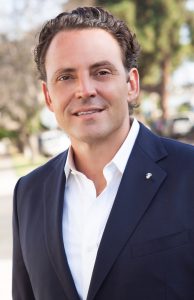
Do you have memorable experiences or memories while riding a bike?
Two experiences come to mind when I think of my most memorable moments on a bicycle. The first, teaching my two boys how to ride a bike, encouraging them to explore and live an active, environmentally conscious lifestyle. We frequently all head out on cycling adventures and really enjoy the family time on bikes! Another memorable experience for me is when I took part in the Iron Man competition. The grueling contest challenged my physical limits and showed me how to continue to push myself. I arrived at this goal after suffering a devastating injury while on active duty in the Marine Corps. Cycling was key to my recover and progressing from learning to walk again to finishing the Ironman was a great feat!
SANDAG’s failed Measure A and its reform under AB805 have put transportation issues at the forefront of San Diego politics. What is your vision for transportation in San Diego County, and how does active transportation fit into it?
For years we have had an ineffective, backwards looking SANDAG board. Now through AB805, alternative forms of transportation, including all forms of active transportation, will have a greater opportunity to move to the forefront of San Diego County’s scope. Active transportation should always be at the forefront of future transportation infrastructure discussion. Not only does active transportation, such as cycling, promote more active and healthy lifestyles, it is also environmentally conscious. Once elected to the Board, I will make sure that our citizens have access to enhanced bike and active transportation infrastructure. We need to make biking a safer easier choice for San Diegans.
As county supervisor, you may have the opportunity to serve on the
boards of MTS or SANDAG. (How) would you advocate for SANDAG’s bicycle early action program, which has experienced significant delays? Would you support MTS ballot measures that include funding for bicycle infrastructure?
I would absolutely support a ballot measure that would include funding for bi
cycle infrastructure. After AB805 the county will play a bigger role allowing me to fight harder for and support pro-bike programs and infrastructure.
Unfortunately, improved safety conditions for bicyclists have been opposed by segments of the community. Politicians often seek a “consensus” solution, but these are not always possible. How would you work with all sides to ensure safety improvements occur?
We are far past seeking consensus solutions. For generations the focus on transportation has been automobiles. It is time we focused on creating true equity in transportation by spending more of our regions transportation resources to support cycling and active transportation. If implemented correctly, we can reduce Greenhouse Gas emissions, create safe biking conditions, and help create bike conditions that make San Diego a national leader for cycling. Safety for all San Diegans needs to be the priority, not politics.
2018 County Supervisor District 4 Questionnaire: Ken Malbrough
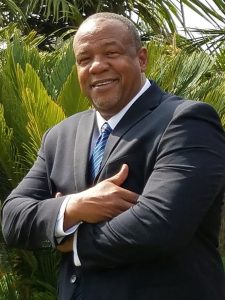 Do you have memorable experiences or memories while riding a bike?
Do you have memorable experiences or memories while riding a bike?
As a young boy growing up in Southeast San Diego I was an avid bike rider; and continued to ride a bike into my adulthood, riding from my home in Skyline all the way to my job at 9th and University, Fire Station 5.
SANDAG’s failed Measure A and its reform under AB805 have put transportation issues at the forefront of San Diego politics. What is your vision for transportation in San Diego County, and how does active transportation fit into it?
All modes of transportation should be accessible to all residents which includes, personal, public, biking and pedestrian transportation for work, personal and leisure use. Active transportation should be a seamless component of entire regional planning.
As county supervisor, you may have the opportunity to serve on the boards of MTS or SANDAG. (How) would you advocate for SANDAG’s bicycle early action program, which has experienced significant delays? Would you support MTS ballot measures that include funding for bicycle infrastructure?
Ensuring that community plan updates include bicycle early action programs. Working with county staff to minimize bureaucracies. I do support MTS ballot measures; and did so in Encanto Neighborhoods Community Plan Update.
Unfortunately, improved safety conditions for bicyclists have been opposed by segments of the community. Politicians often seek a “consensus” solution, but these are not always possible. How would you work with all sides to ensure safety improvements occur?
In my experience I have found that showing benefits to increasing all forms of safe active transportation through solid outreach can assist in all sides in reaching a consensus. In my time as a Deputy Fire Chief I have experience in executing effective community outreach.
The Shadowy Status of Bike Share in San Diego Gets a Bit Clearer
There has been quite a bit of coverage in the local media recently regarding dockless bike-share systems. Companies such as LimeBike, Ofo, Spin, and others have shown interest in operating in San Diego and one, LimeBike, is currently operating in Imperial Beach and National City. These new offerings join DecoBike in providing bike-share options to the public in San Diego County. DecoBike operates in the City of San Diego and is a "traditional" bike share system with docks that bikes are checked into and out of. The dockless systems differ in not having the docking stations that are a staple of many bike share programs. This increase in the bike-share options in the region would seem to be a good thing, with more options and more bikes for users as well as competitive forces spurring operators to provide good value and offer incentives, upgrades, etc to stay relevant and win market share. However, in the City of San Diego there is some disagreement about the nature of the relationship the city has with DecoBike and whether other bike-share operators will be welcomed or even allowed in the city.
Two good articles to check out about bike share systems and the DecoBike agreement with San Diego cover the issue from a variety of angles. They're well worth a read.
CityBeat (John Lamb) - Nov 21, 2017
Union-Tribune (David Garrick) - Dec 4, 2017
Today the DecoBike agreement and impact on future bike share programs may have gotten a bit clearer. Below is a copy of a memo shared today on Twitter by City Councilmember David Alvarez that addresses the question of the exclusivity element of the agreement between San Diego and DecoBike. As this issue is of interest to the BikeSD community we wanted to share it here so that others could access. The memo appears to rebuke the notion that there is an exclusive ability for only one bike share program, DecoBike, to exist in San Diego. The memo specifically mentions the Spin dockless system but would appear to generally support additional bike share operators. We're also including the DecoBike agreement in full at bottom for reference.
[pdf-embedder url="https://bikesd.org/wp-content/uploads/2017/12/Exclusivity-Memo-DecoBike-and-San-Diego-Agreement-12-6-2017-1.pdf" title="Exclusivity Memo - DecoBike and San Diego Agreement - 12-6-2017"]
Bike San Diego greatly appreciates the efforts that the City of San Diego and DecoBike have made in bringing bike-share to San Diego. These systems have become key elements of urban transportation systems in cities across the globe. However, as with many aspects of building a stronger cycling culture in San Diego the most needed ingredient for success is establishing a robust network of safe roads for biking. On that count - the most important and base level necessity - our local and regional efforts continue to be delayed, half-measures, or isolated improvements that start or end without connecting to other good options in a cohesive system. Without a robust network any bike initiative - bike share, increasing bicycle commute mode share, hitting Climate Action Plan targets, improving air quality - will have difficulty in being successful.
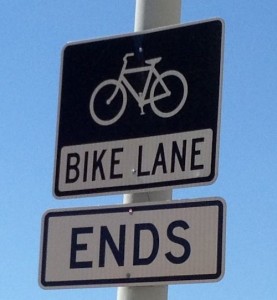
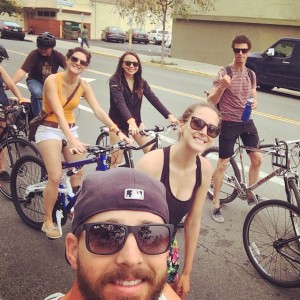
The original agreement between DecoBike and City of San Diego can be found in full below:
[pdf-embedder url="https://bikesd.org/wp-content/uploads/2017/12/Corporate-Partnership-Agreement-San-Diego-and-Deco-Bike-8-14-2013-1.pdf" title="Corporate Partnership Agreement - San Diego and Deco Bike - 8-14-2013"]
